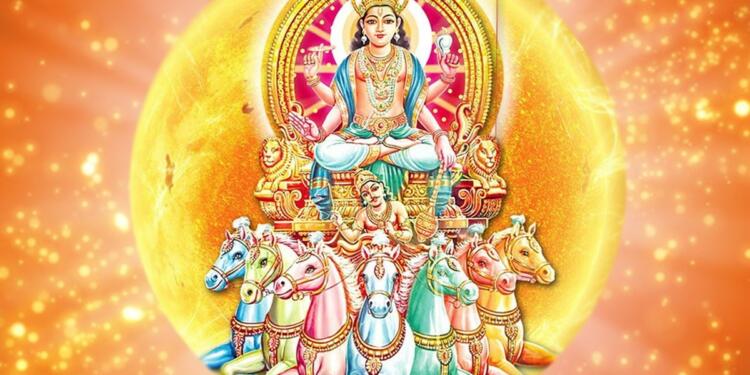So, Valentine’s week is on. Next seven days, gullible youths in India will be proving Karl Marx’ postulation about Capitalism utilising the moral system for its own gains. Little do they know that instead of celebrating Rose Day, they should be up for Surya Jayanti.
Surya Jayanti
Surya Jayanti or Rath Saptami is one of the most ancient Hindu festivals. It is also known by various names such as Arogya Saptami or Achala Saptami. It falls on the Saptami (seventh day) in Shukla Paksha (the bright half) of our Maagh month. As the name suggests, Surya Jayanti is specifically dedicated to the worship of Bhagwan Surya.
It is a common belief that Bhagwan Surya was born to Rishi Kashyap and his wife Aditi. Rath Saptami is specially dedicated to the birth of Bhagwan.
Read more: In Kashyapa Rishi’s Kashmir, Sanskrit chants will be heard again
Legends
There are various legends associated with Surya Jayanti. It is said that Bhism Pitamah’s last breath came four days after Surya Jayanti. King Yashovarma, a ruler of Kamboj Empire had a son who used to remain perennially ill. After advice from a Sadhu, his son started to perform Rath Saptami pooja due to which his illness got cured.
As per Hindu mythology, it was said that one of the Kamboj Empire’s king, Yashovarma was a noble king who did not have an heir for his kingdom. He did some special prayers to God and he was blessed with a son. But his son was terminally ill. A saint who visited the king advised
— Dr.Prema lakshminarayana (@GEEMS71) February 18, 2021
Methods to observe and Science engrained
Like every Hindu festival, there is a proper way to observe Surya Jayanti. The most essential feature of the method is waking up early in the morning and taking a snan (bath) during sunrise. It is believed that any kind of sin committed get washed away through this snan.
For people searching for Science here, Sunlight is considered the best provider of natural immunity. It is advisable that one should spend at least 20 minutes per day in fresh sunlight. It’s only logical to take a bath in the morning, something so-called modernity has deprived us of.
After the snan, devotees perform arghya to Surya Dev. In this, they offer water to him from a special type of Kalash. Then they chant Bhagwan Surya specific Mantra while offering oil/ghee lamp, red flowers, incense and an ignited camphor to Bhagwan. These Mantras include Surya Mantra as well as Surya Gayatri Mantra.
Full of symbolism
The Jayanti is especially depicted by the Bhagwan turning his Rath being pulled by seven horses. The seven horses represent seven colours of the rainbow. They also represent seven days of the week. The 12 wheels in Rath represent the 12 signs (each of 30 degrees) of the Zodiac (360 degrees) and constituting a full year, named Samvatsar. The Sun’s own horse is Simha (Leo) and he moves from one house to the next every month and the total cycle takes 365 days to complete.
With so much to look for in our Hindu festivals, it’s a sad reality that youths are running the endless race of environmental degrading consumer spending in 7 days long valentine week.

































